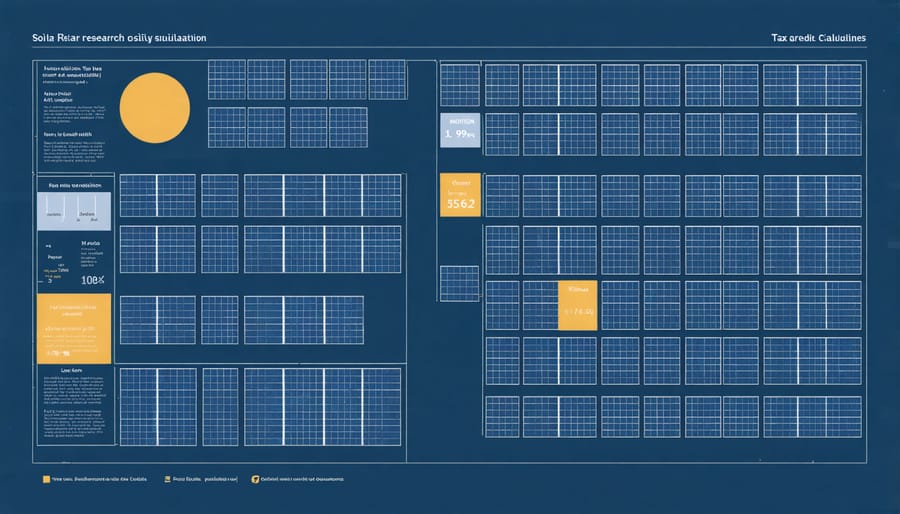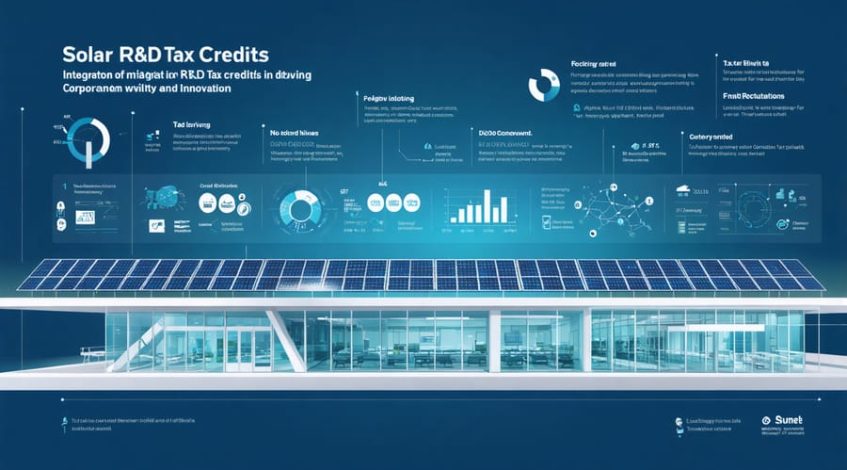Green energy incentives are reshaping the landscape of corporate sustainability, offering unprecedented opportunities for businesses to maximize their return on renewable energy investments. As governments worldwide accelerate their commitment to carbon reduction targets, a new wave of tax credits, grants, and financial mechanisms has emerged, making sustainable energy solutions more economically viable than ever before.
The Inflation Reduction Act of 2022 marked a pivotal shift in America’s green energy policy, introducing over $369 billion in climate and clean energy investments. For forward-thinking organizations, these incentives represent more than just cost savings—they offer a strategic advantage in an increasingly sustainability-focused market. From investment tax credits covering up to 30% of solar installation costs to production tax credits rewarding ongoing renewable energy generation, the financial benefits of green energy adoption have never been more compelling.
Leading companies leveraging these incentives are not only reducing their operational costs but also strengthening their competitive position, enhancing their ESG profiles, and future-proofing their operations against evolving regulatory requirements. For decision-makers seeking to optimize their energy strategies, understanding and utilizing these incentives has become a crucial component of successful business planning.

Current Regulatory Framework for Solar R&D
Federal Tax Incentives
Federal R&D tax incentives provide significant opportunities for businesses investing in green energy innovation. The Research and Investment Tax Credit (R&D Credit) offers up to 20% reduction in federal tax liability for qualifying research activities in renewable energy technologies. This credit specifically supports companies developing advanced solar technologies, energy storage solutions, and smart grid management regulations.
The Department of Energy’s grant programs further supplement these incentives, offering direct funding through initiatives like the Small Business Innovation Research (SBIR) program. These grants typically range from $150,000 to $1 million for Phase I and Phase II research projects.
Companies can also benefit from the Advanced Energy Manufacturing Tax Credit (48C), which provides a 30% investment credit for facilities manufacturing clean energy technologies. Notable success stories include Tesla’s gigafactory development and First Solar’s manufacturing expansion, both leveraging these incentives to scale operations while reducing implementation costs.
To maximize these benefits, businesses should maintain detailed documentation of their research activities and consult with tax professionals specializing in renewable energy incentives.
State-Level Programs
State-level green energy incentives vary significantly across the United States, creating a diverse landscape of opportunities for businesses and organizations. California leads with its Self-Generation Incentive Program (SGIP), offering substantial rebates for energy storage systems and renewable energy technologies. New York’s NY-Sun initiative provides performance-based incentives and reduces installation costs by up to 35% for commercial solar projects.
Massachusetts maintains its SMART program, which guarantees fixed-rate payments for solar generation over 20 years, while New Jersey’s successful SREC program has evolved into the TREC system, offering competitive market-based incentives. Colorado and Illinois have introduced innovative performance-based incentives that reward actual energy production rather than just installation capacity.
These state programs often complement federal incentives, creating opportunities for strategic funding combinations. Many states also offer property tax exemptions, sales tax relief, and expedited permitting processes for renewable energy projects. Business owners should consult their state energy offices to identify available programs, as incentives can significantly impact project economics and ROI calculations.

Key Benefits for Businesses
Direct Financial Benefits
Green energy incentives offer substantial direct financial benefits through various tax savings and rebate programs. Organizations implementing renewable energy solutions can achieve significant financial returns from solar investments through multiple channels.
The Investment Tax Credit (ITC) remains one of the most impactful incentives, allowing businesses to deduct up to 30% of their solar installation costs from their federal taxes. Additionally, organizations can benefit from accelerated depreciation through the Modified Accelerated Cost Recovery System (MACRS), enabling them to depreciate their solar assets over just five years.
State-level incentives further enhance the financial appeal, with many jurisdictions offering performance-based incentives (PBIs) that provide direct payments for each kilowatt-hour of renewable energy produced. Solar Renewable Energy Credits (SRECs) create another revenue stream, allowing organizations to sell credits earned from their solar production.
The combination of these incentives typically results in a payback period of 3-7 years for most commercial installations, with continued savings extending throughout the system’s 25-30 year lifespan. Organizations implementing green energy solutions also benefit from reduced utility costs, with many achieving 40-70% reduction in their monthly energy expenses.

Competitive Advantages
Investing in solar R&D presents several compelling competitive advantages for businesses and organizations. First, early adoption of innovative solar technologies positions companies at the forefront of the renewable energy transition, enabling them to capture market share and establish industry leadership. Organizations that invest in solar R&D often experience accelerated technological breakthroughs, leading to improved efficiency and reduced operational costs.
The development of proprietary solar technologies through R&D creates valuable intellectual property assets, which can generate additional revenue streams through licensing agreements and patents. Companies engaging in solar research also benefit from increased attractiveness to investors and stakeholders who prioritize environmental, social, and governance (ESG) criteria in their investment decisions.
Strategic R&D investments often result in enhanced product differentiation and unique value propositions. For example, businesses developing high-efficiency solar panels or innovative energy storage solutions can command premium pricing and secure long-term contracts with quality-focused customers.
Furthermore, organizations investing in solar R&D frequently qualify for additional government incentives, including research grants, tax credits, and public-private partnership opportunities. These financial benefits compound the return on investment while reducing the overall cost of innovation. The expertise gained through R&D initiatives also positions companies to better navigate regulatory changes and adapt to evolving market demands, ensuring long-term sustainability and competitive advantage in the renewable energy sector.
Case Study: Successful Implementation
SolarTech Solutions, a mid-sized technology company based in California, exemplifies the successful utilization of green energy R&D incentives. In 2019, the company initiated a comprehensive research program focused on developing high-efficiency solar panels with integrated smart monitoring systems. By strategically leveraging federal and state incentives, they transformed an ambitious project into a commercially viable innovation.
The company initially secured $2.5 million through the federal Solar Energy Technologies Office (SETO) funding program. They complemented this with California’s Solar Initiative Research, Development, Deployment, and Demonstration (CSI RD&D) grant, which provided an additional $1.8 million in matching funds. This combined funding allowed SolarTech to establish a state-of-the-art research facility and recruit top talent in photovoltaic technology.
The R&D program yielded significant results within two years. SolarTech developed a novel solar panel design that increased energy conversion efficiency by 27% compared to conventional panels, while reducing manufacturing costs by 35%. The smart monitoring system they created simultaneously improved panel maintenance efficiency and extended the average lifespan of installations by 5-7 years.
The financial impact was substantial. The tax credits and grants reduced SolarTech’s effective R&D costs by 45%, accelerating their return on investment timeline from seven years to just three years. The company has since commercialized their technology, securing contracts worth over $50 million in the first year of production.
Beyond financial benefits, SolarTech created 75 new high-skilled jobs and established partnerships with three major universities for ongoing research. Their success has attracted additional private investment, enabling them to expand their R&D initiatives into energy storage solutions. This case demonstrates how strategic use of green energy incentives can catalyze innovation, drive business growth, and contribute to sustainable energy advancement.
Maximizing Incentive Benefits
Documentation Requirements
Proper documentation is crucial for successfully claiming green energy incentives and maintaining compliance with regulatory requirements. Organizations must maintain detailed records of their renewable energy investments, installation processes, and ongoing performance metrics. Essential documentation typically includes:
• Purchase agreements and contracts with renewable energy equipment suppliers
• Installation certificates and permits
• Energy production data and performance reports
• Maintenance records and system upgrades
• Financial statements showing investment costs and returns
Companies should implement innovative compliance tracking systems to streamline documentation management and ensure accuracy in reporting. These systems help monitor energy production, track incentive claims, and maintain regulatory compliance.
Key compliance procedures include:
• Regular system performance audits
• Quarterly or annual reporting to relevant authorities
• Verification of energy production claims
• Documentation of carbon offset calculations
• Records of employee training on system operation
Organizations should retain all documentation for at least seven years, though requirements may vary by jurisdiction. Digital record-keeping systems with secure backup procedures are recommended to ensure data integrity and easy accessibility during audits. Establishing a dedicated team or appointing a compliance officer to oversee documentation management can help maintain consistent record-keeping practices and ensure timely submission of required reports.
Application Strategies
To maximize your chances of securing green energy incentives, start by conducting a comprehensive energy audit to identify potential areas for improvement and eligible projects. Document your current energy consumption patterns and establish clear baseline metrics, as these will be crucial for demonstrating project impact and ROI in your applications.
Create a detailed implementation timeline and gather all necessary documentation well in advance. This includes energy bills, equipment specifications, contractor quotes, and relevant permits. Many incentive programs require pre-approval, so submit applications early in your project planning phase to ensure eligibility and maximize potential benefits.
Partner with certified contractors and energy consultants who have experience with incentive programs. Their expertise can help navigate complex application processes and ensure compliance with technical requirements. Consider bundling multiple energy-efficient improvements to optimize incentive packages and achieve greater cost savings.
Maintain meticulous records throughout the project implementation. Document all expenditures, installation processes, and energy performance metrics. This information will be crucial for post-implementation verification and ongoing compliance requirements.
Stay informed about program deadlines and requirements through regular communication with program administrators. Many incentive programs operate on a first-come, first-served basis or have limited funding windows. Consider engaging with utility representatives and energy program coordinators to understand all available opportunities and ensure your application stands out.
Remember to factor in tax implications and consider timing your projects to align with fiscal year planning. This strategic approach can optimize your organization’s financial benefits while contributing to sustainability goals.
Future Outlook
The landscape of green energy incentives is poised for significant transformation over the next decade, driven by technological advancements and evolving policy frameworks. As the commercial solar power evolution continues, research and development incentives are expected to shift toward more targeted and performance-based models.
Industry analysts project a substantial increase in public-private partnerships, with governments worldwide introducing more sophisticated funding mechanisms that reward innovation and scalability. The focus is increasingly moving toward integrated solutions that combine solar technology with energy storage and smart grid capabilities.
Several key trends are emerging in the R&D incentive space. First, there’s a growing emphasis on regionalized incentive programs that address specific geographical and market needs. Second, we’re seeing the rise of outcome-based funding models that tie incentives to achieved efficiency improvements and cost reductions. Third, there’s increasing support for collaborative research initiatives that bring together multiple stakeholders across the value chain.
Looking ahead, artificial intelligence and machine learning are expected to play crucial roles in optimizing solar technology development, leading to new categories of R&D incentives specifically designed for digital innovation. Additionally, circular economy principles are becoming more prominent, with incentives beginning to reward sustainable manufacturing processes and end-of-life considerations for solar equipment.
For businesses and researchers, this evolving landscape presents both opportunities and challenges. Success will depend on staying informed about emerging incentive programs and aligning research objectives with policy priorities while maintaining focus on practical, market-ready solutions.
Green energy incentives represent a pivotal opportunity for businesses to enhance their sustainability while achieving significant cost savings. By leveraging available tax credits, grants, and rebates, organizations can substantially reduce the initial investment in renewable energy technologies and accelerate their return on investment. The combination of federal, state, and local incentives creates a compelling business case for transitioning to green energy solutions.
To maximize these benefits, businesses should take several key actions: conduct a comprehensive energy audit, develop a strategic implementation plan, and engage with qualified energy consultants to identify all applicable incentives. Regular monitoring of policy changes and program deadlines is essential to capitalize on time-sensitive opportunities.
Looking ahead, the green energy landscape continues to evolve with increasingly attractive incentives and technological advancements. Organizations that act now position themselves to gain competitive advantages, meet growing stakeholder expectations for environmental responsibility, and achieve long-term operational cost reductions. By incorporating green energy initiatives into their business strategy, companies not only contribute to environmental sustainability but also secure their energy future while benefiting from substantial financial incentives.

